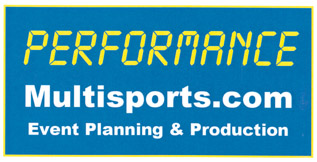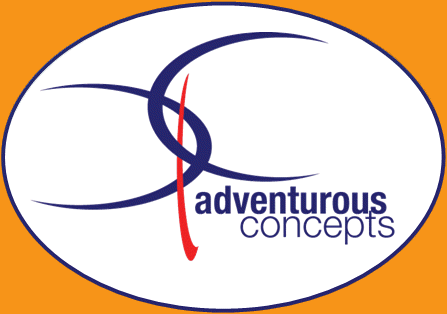
 | ||||

 | ||||||

FLORIDA'S PREMIERE ADVENTURE RACING CLUB
**Location of the Wednesday Night Training Florida Xtreme meets every Tuesday night at 6:00pm to bike and trail run.
Over 2,000 acres of great double track loops. 6-8 miles of trails. Land split by the Julington and Durbin creeks that lead to the St. Johns River. Great canoeing.
**Location of the Wednesday Night Training Florida Xtreme meets every Tuesday night at 6:00pm to bike and trail run.10,000 acres of double track trails. 10-15 miles of good running and biking trails. No water access.
Great Jacksonville bike park. 5-6 miles of single track with a few small hills. Short running trails
Over 20,000 acres of trails great for biking and trail running. Small creek canoeing.
Four very good biking trails.
About 90 minutes from Jacksonville, however some of the best hill training in Florida. Over 20 miles of great single-track biking.
Big Shoals State Park has many single and double track trails for both running and biking.
60,000 acres of trails for biking and running. Surrounded by water on both sides the park is perfect for kayak training. 30-40 miles of mixed trails, some muddy, sandy, hard-packed, rooty and all very flat. Home for many adventure and trail running events each year.
Adventure Racing Information
The links below will help team members and visitors retrieve information about associations, gear, national events and training.
Links 


 Information
Information

 Website
Website
Training and racing Tips:
Racing Tips from Mike Kloser
1. When I'm gearing up for an event, I research what disciplines the race will offer and prepare accordingly. I try to work on my weakest
areas of strength or skill. It's always easiest to just go out and work on your strengths, but in reality, you really need to get out and spend some serious effort on improving your weaknesses.
2. I generally try to stay pretty fit year round so as events pop up on the calendar, I'm not too far from descent fitness. If I stay healthy I can essentially work on specific skills related to the race and be reasonably prepared with in a few weeks. The down side to this general fitness principle is, it can be a challenge to peak for some specific race on the calendar that might require a very specific training program to reach optimal form.
3. In order to maintain a fresh, enthusiastic attitude towards training and racing after 20 years of competition, I try to keep my training as enjoyable as possible. I kept on a pretty intense program while racing bikes for 10 plus years, so now with Adventure Racing, I try to mix it up as much as possible and keep fresh outlook on training and racing. With adventure racing being a combination of skills, it's much easier to have a diverse training program and remain enthused to train year round.
4. For my high end fitness and training needs, I participate in quite a few different races throughout the year. These might range from a 20min. time trial on a bike to a 7 hour solo adventure race. This is my substitution for speed work in training, although I will still do some speed specific workouts as needed, I find the intensity of racing is a much easier way to achieve this and if all goes well it can be rewarding as well. At times, I may find myself racing as many as 2 to 3 times a week, and other times no racing for several weeks. Rest and recovery are a very critical and important element in training.
5. I mix up my training quite a bit and try to include my family and friends in my outings as much as possible, company and conversation can make for a much more pleasant experience at times.
Final race day prep
1. Try to share responsibilities with team mates as not too over burden yourself when it comes to acquiring gear and taking care of logistics.
2. Get your gear lined up or purchased well in advance and make sure you have had a chance to go out and test it in an environment as close to that of racing as possible. If you break it out the package on race day, you are setting yourself up for disaster.
Transitions
Ian has pretty well nailed this, I would add that as Ian said if you finish your task in a TA prior to the others, don't stand there barking orders such as let's go, hurry up, etc. it will only frustrate them (I've been guilty of this on more than one occasion). As Ian stated, ask what you can do to help assist the team in getting back on the trail, you will in essence be helping yourself and the team both.
Race Day Checklist
Tips from Retired Team Nike Member Ian Adamson
1. Make sure you double check the mandatory equipment list. A written list is very useful so you can check off each item as you put them in your boxes.
2. Make a second list of items that are necessary to race with, over and above the mandatory gear. Things like extra apparel, food, spare equipment and medical supplies are useful for long races.
3. Tape a gear check list inside your gear box(s) - if you are doing a long race.
4. Make sure you eat well but don't over eat the night before a race. Meal planning for the morning of race day is also important as it is the last chance you will have to eat and hydrate without physical stress on your body.
5. Pre-race sleep is important, especially for multi-day races. With this in mind, try to have all your clothing, equipment and food prepared before you get to the race site and then use any extra time to rest or nap.
Transitions
1. Practice your transitions. This means setting up your food/apparel/equipment just as you would have it for the race and do a few timed run through's in each of the likely combinations. You should be able to do a major complicated transition in 10 minutes with practice, although most teams take 40 - 60 minutes and 20 minutes is pretty good. For sprint races your transitions should be well under 5 minutes, with the best times a minute or less.
2. Think through each transition well in advance of getting there. It helps to talk it through with your teammates and mentally rehearse what you are going to do.
3. Know what sport you are doing next. One trap teams fall into is not knowing what is ahead. Many athletes rely on their teammates to think through the race, but everyone on the team should know so you can all be using your brainpower (which is at no athletic cost, but a huge time cost if not used).
4. Assign tasks. Generally there will be tasks that have to be done for the team as a whole, or ones which can be separated out - such as organizing food, questioning officials or preparing maps. These tasks should be pre allocated for the transition to keep it smooth and to cover all necessary tasks.
5. Help each other out. If you are finished with preparing your personal items in a transition look to help your teammates and ask to help anyone who is lagging. Conversely if you are slow in the TA, ask your teammates for help.
Foot Care
Team Cintia: Their strategy stems from experience mixed with pure professionalism: Roy and Jason have competed in many multi-day races, and Jason is an emergency room doctor. They emphasize being proactive. They tape their feet with a medical tape called Luckotape prior to heading out, paying special attention to each person's usual trouble spots, and then apply water-repellent cream on top. Whenever they had any rest-stop for more than just a few minutes, Roy, who was in charge of foot care for this race, would inspect everyone's feet, so that hot spots in the earliest stage could be detected and taped even before the racer themself was actually aware of them. On the long hike on this race, each team member brought (and used) five pairs of socks – so feet could always be kept as clean and dry as possible.
Pongo and team-mates use an impermeable cream on their feet before heading out. He emphasizes the importance of keeping feet as dry as possible. At every rest stop, even if it is just for a few minutes, the whole team removes socks and shoes. In a hot sunny spot, socks and even shoes can dry within a few minutes, and the skin on the feet also dries out much more quickly with socks off. Cintia raced with a different team here last year, and she was in tears at several of the transition because of her blisters; this year she finished the race all smiles.
For the impermeable layer, Pongo and the boys use the cream called "pañilito" here, the baby diaper rash cream, while Cintia prefers to use just regular vaseline. I ask why the difference, and she says "Personal preference, that's all."
Fighting Emotions
The Emotional Rollercoaster Of Adventure Racing
Adventure races can be an emotional roller coaster, with many highs and lows. Take a moment to reflect back on one of your recent racing experiences, and think about all of the different feelings and emotions that you experienced from before the race, during it, and after it. You may find it useful to make a note of these before reading any further.
Your emotional state is how you are currently experiencing the world – happiness, sadness, excitement, boredom – and it does not just jump on you. It is the consequence of something you are doing in your mind, and because of this, through mental skills training you can develop the ability to take charge of your emotions, and to experience your desired emotions on cue throughout a race – imagine that!
What emotional states lead to success in your adventure racing? – relaxed, confident, positive, focussed, determined, aggressive - and most importantly, how can you build them?
Getting In A State
There are three factors which influence your emotional state:
• Physiology – posture, breathing, facial expression, muscle tension, heart rate, how you walk, head position, gestures...
• Ideology – what, and how, you imagine and say to yourself.
• Environment – the physical and social environment
To change your emotional state first change your physiology – this is the simplest and most powerful way to effect positive change. How would your posture, breathing and heart rate be in that desired state? What about muscle tension, facial expression? The way you walk? By recreating the physiological aspects you will recreate the emotional state. It is as simple as that! Try it. Pick a desired emotional state. Think back to a time when you were in that state and notice your physiology. Now recreate the same physiology and allow yourself to enter that desired emotional state. A useful way to remember this is to ‘Act as if…’ i.e. to act as if you were in that emotional state.
Secondly, make sure that you are saying and seeing appropriate words and images to connect you to that state. For example, think of a time when you were confident and focussed. What did you say to yourself and imagine internally. What could you say to your self, and imagine, to feel more positive, more relaxed, more confident? Remember, it is not just what you say and see but how. If you want confidence, talk to yourself in a confident and positive way. For all desired states, use images that are big, bright, clear, colourful and where you are seeing things through your eyes. Feel how it feels.
The environment – weather, location, terrain, other competitors, team mates, equipment – are not under your control, unlike physiology and ideology. Environmental influences are often a significant factor in our emotional states. Reflect back to your racing experiences when perhaps the weather was difficult, the terrain was very challenging, there was a team dispute, or equipment problems. Notice how in the past these factors probably affected your state, and recognise that by changing your physiology and ideology you can achieve positive peak performance states regardless of the environment now.
Programming Yourself For Success
1. Make a list of all of your desired states for a race.
Firstly, think about all of the emotional states that you wish to have during a race. To do this it is useful to reflect back on past races and notice the emotional states experienced, and which were helpful, and which were not. (Use a similar chart to the one below to record the information.) Also, take time to think about specific situations that may occur during an event, and the emotional states that you would want to be in e.g. start of the race, after a navigational error, when leading/performing really well, when feeling tired or struggling, between stages/disciplines etc. It is also helpful to think of times when you may want to boost performance and have states such as ‘power’ and ‘energy’ etc.
2. Recall the desired states, notice key elements, and build cue/words and images to be able to access them.
First recall the desired state and analyse the key components of physiology and ideology. Notice heart rate, breathing, posture, expression, gesture, thoughts, images etc. Then practise recreating them until you can do them automatically. This can be helped by giving each emotional state a cue/key word, and a strong image, as a trigger or reminder for what is required. By practising and developing this technique you can make sure that you are in control of your emotions. Try changing from one state to another by using your cue word/image, and changing physiology/ideology – over time, simply using the word/image will be enough for you to access the desired state.
Taking Charge
You want to recognise the power that taking charge of your emotions gives you, and I really encourage you to spend time practising your emotional state management. How you are feeling at any given time will significantly affect your level of performance. Doing anything in the right emotional state is more productive, and results in higher levels of performance, whether it is adventure racing, working, doing the shopping, or even the washing-up!
Mountain Biking at Night
by Mike Kloser
Mountain Biking at night, don’t let the dark of night scare you, riding off road at night can be a lot of fun and a great experience. I often enjoy getting out for a night time ride with friends, especially in the fall when the nights start to cool off and the long days of summer have passed. For us day jobbers, it may be the only way we can log some legitimate hours or miles on the mountain bike.
Here are a few pointers that I’ve learned over the years that should help in making your night ride more pleasurable, who knows, with time you might actually find yourself looking forward to those short days of the fall and winter?
Get a good light. Don’t wait to learn this lesson the hard way, go out and invest in a quality bright light. This may run you several hundred dollars, but think about the money and agony you could save yourself from a trip to the emergency room. I used to be all concerned about the weight and convenience factors while racing through the night in big adventure races like the Eco Challenge. I’d use little trekking headlamps with disposable batteries, thinking I could save weight and time. As it turns out I probably lost time, as I had to go slower and needed to change out batteries with in a few hours time. Now I use the Jet Lites system and can run up to 8 hours on one battery, which fits into a water bottle. This 12watt system is a little jewel that lights up the trail like that of searchlight in a prison yard!
Mount the Light on your Helmet. It may at times be easier to mount your light on your handle bars, but your handle bars aren’t always pointed in the direction that you want to see or travel. Make sure when you purchase your lighting system that it has a helmet mount. If you want to see around the bend and you’re headed straight, the handle bar setup won’t do you much good. I often find myself looking in various directions to find trail or road intersections and it’s a lot easier to manage this with a light mounted to your helmet than it is on your handle bars.
Look up and ahead. Like most sports that require forward travel, it’s easy to find yourself focusing on the trail or object right in front of you verses off in a reasonable distance. If you can get in the habit of looking several bike lengths ahead you will find travel much easier, fluid and faster. During long races as fatigue sets in, I sometimes have to remind myself to quit looking down at the trail just in front of my wheel and focus my attention up the trail. Looking ahead is especially true on twisting and technical single track. Try to look as far in the distance as is comfortable for your skills and continue to work towards looking several bike lengths ahead, eventually you will find yourself trying to out distance your lighting system.
Ride in the front of a group or give sufficient space. When ever possible, I try to ride at the front of the pack at night, this allows me to go my pace and I don’t find myself becoming mesmerized by the lights and bikes of those around me. It can also be very helpful when the trail becomes dusty or foggy in the haze of moisture. If you’ve ever been behind a few riders at night heading down a dusty single track, you know how difficult it can be to see your way through the dusty haze in hopes that you don’t plow into some rock or ditch. If you aren’t in the front, back off and give enough space between you and the riders ahead to allow for a good line of vision.
Have fun and be safe. A good pair of clear lens glasses and a simple blinking rear light should be part of your gear, just as your helmet is. Riding at night has its challenges and rewards, ride smart so you can enjoy your next ride even more than the last!
Ropes - Ascending
By James Thurlow
Introduction
Preparation
I can not emphasise this enough – PRACTICE – abseiling really doesn’t require much skill but ascending a rope does. Practice not only on free ascents (where you are ascending a rope with no obstructions around you) but also up sloping faces. If you are not near a convenient rock face, try and convince your local climbing wall that it would be OK for you to practice there.
As per the abseiling it is recommended that you carry your rucksack beneath your backside, so as to prevent yourself tipping upside down. Practice ascending with a rucksack, if you are weak in the arms you might want you to consider reallocating some of the weight in the team to your resident gorilla.
Setting up the equipment
There are numerous ways to set up this equipment, particularly if you start using some of the other fancy ascending devices. I will explain the two most common methods. My recommendation would be using a Croll and an Ascender, as this, in theory, should be the more efficient means of ascent.
Croll and an Ascender
The diagram above right from Petzl shows the positioning of the Croll and the Ascension. It is important to get the Croll to sit as low as possible on the body, ideally so its around the height of your belly button. To do this, attach the karabiner which connects the Croll to the harness to the belt loop of the harness and the webbing that joins the two leg loops.
Connect the Petzl Torse to the Croll (it’s wise just to leave the Torse permanently connected to the Croll) and attach it to the back of the harness. Bend over and tighten the Torse as much as you can – when you straighten the Croll should be as close as possible to your body.
Attach your leg loop and a sling (length approx = left shoulder to right hand) to the Petzl Ascension using a screw gate karabiner. Attach the other end of the sling to the Karabiner that holds your Croll to your harness (Picture). The idea of this is that if for whatever reason the Croll fails the back-up is the sling attached to the Ascension.
Attach the Ascension to the rope first, this needs to be about chest height when your foot is in the loop, adjust the loop to the right length (if its too long just tie an overhand knot to shorten it, if its too short buy a longer one). Attaching the Ascension and the Croll can be a bit fiddly, but in summary lock the cam back by pulling the black plastic handle, slide the rope in to the grove and release the cam (its easier to demonstrate than to describe!! See picture above).
Check that the Ascension slides up the rope but not back down it! If you need to release the cam just temporary pull back on the plastic handle and lower it down.
A similar process goes for attaching the Croll to the rope. Remember it is not possible to release the cam on either the Croll or the Ascension if your weight is hanging on the end of it.
Two Ascension’s
This method replaces the Croll with a handled ascender, which in turn is connected by a short sling to the harness (picture). If the sling is too long the two Ascensions will bump in to each other on the rope making it a frustrating and an inefficient process.
Ropes III - Ascending
By James Thurlow
Ascending
It is by far easier to ascend a rope that has no obstructions around it (e.g. you’re not ascending against a rock face). Simply put think of the ascending process as being similar to shinning up a pole. You grip with your arms, bring your legs up, grip with your legs, slide your arms up, and so on.
Using the ascenders is a similar process – the rope should be between your legs (pictures)
1. Here the process is take your weight on the Croll (or the second ascension)
2. Slide the ascender up – which raises the leg loop (bend the knees and keep your foot in the loop)
3. Stand up in the leg loop
4. In the case of the Croll this will slide up the rope (for a second ascender you need to slide the ascender up as you stand up in the leg loop).
5. Back to no 1
The process is slightly more difficult when you are ascending against a rock face, if it is reasonably vertical some just drag themselves up against the face. If it has any degree of angle, you will need to stick one leg out and balance your body on that leg, hopping your way up – it is a far from a graceful experience. The secret to both methods is to use your legs – if the ascent is of any length you will soon get very knackered if you are constantly pulling yourself up by your arms (hence why I recommend the Croll and why you need to get it as close to your waist as possible).
What can go wrong?
1. You get stuck – life’s a dog sometimes! If you are stuck because you are awestruck by the height you now find yourself at, stop, take a breath of fresh air and don’t be afraid to tell your mates the situation (ideally let them know you’re nervous before you ascend). There is nothing wrong with that and I’m sure if you chatted to most Adventure Racer’s they have some phobia – mine is white water. Think logically about where you are, you are held up by a rope that can suspend a minibus with all its occupants – you are not going anywhere unless you choose to.
For your team mates this might be a time to ensure that someone is ascending at the same rate as your nervous comrade, ideally unloading all of their kit before they go up.
Hopefully the rope section has been set-up with some kind of technical support on hand, as per the abseil, so in an emergency they should be able to pull you out, but really if it gets to that situation and you haven’t had a genuine accident, this would be using outside help, and hence you could be disqualified.
To avoid all this nasty business I can not recommend enough the need to get out and practice.
2. Everybody is going faster than me! – Umm you need to practice, it could be that your sling lengths are wrong and that you either can not raise the ascender high enough or that the sling that attaches the second ascender is to long.
The other problem some Adventure Racers have mentioned is that they often practice without a rucksack – add a rucksack full of food and it’s a lot more difficult – practice.
3. You tip upside down – The same response as for abseiling, although I would be surprised if it happened, normally this would be because you have a heavy rucksack on.
4. You need to go down – yep it is possible to go down with ascender, you need to take the weight off the Ascension, release it, slide it down, take your weight on it, release the Croll or the second ascension, slide it down, etc. It takes practice and a little bit of thinking power.
5. When standing up the rope doesn’t slide through – ah this is a bit of problem, if you are in a team of four its worth having someone at the bottom to pull on the rope, so it slides through. If nobody is about you might have pull the rope through when you stand up. If it’s a free ascent, you could attach a rucksack to the bottom and pull it up when you reach the top, but I wouldn’t recommend it on a rock face as the sac might get caught on the way up.
Training Areas in North Florida
Adventure Racing Bikes
Adventure Racing Shoes
Kayaks and Canoes
Racing Information
Adventure Gear
Racing Information
Email Forum

National Association
Trail Running Calendar
Racing Information
Trail Running Magazine
Florida Racing Events
Bikes Direct
TEVA
Up the Creek Expeditions
Adventure Racing Concepts
AR Gear
Adventure Racing Zone
AR-LIST
USARA
Trail Runner
Are You Ready?
Trail Runner Magazine
Pangea Adventure Racing
Adventure World Magazine
Event organizations in Florida
Review this websites for more information about upcoming events.
Training Calendar
Member's Blog pages
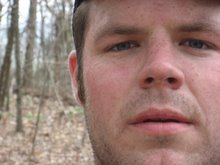
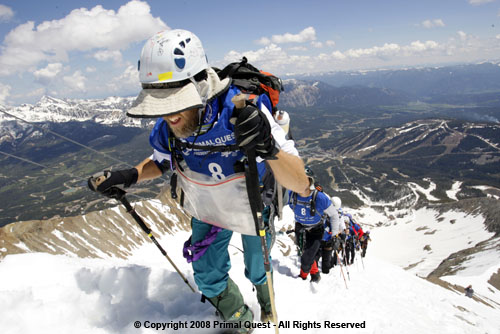
 | ||||
WE ALWAYS THANK OUR SPONSORS
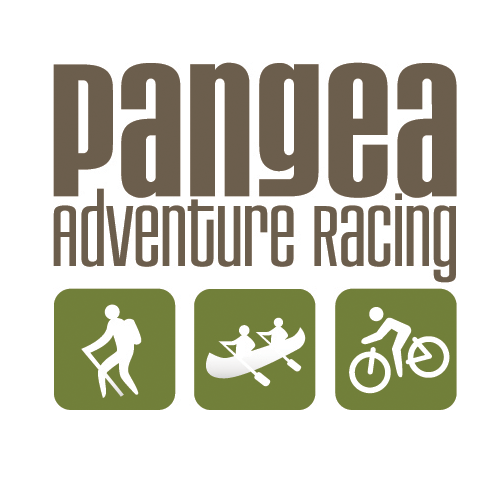
 | ||||||
Weekly Training
Every Tuesday night: Mountain Bike Training
Start time: 6:00 pm
Location: Guana River Wildlife Management Area
Description: Florida Xtreme will meet every Tuesday night for This training event. It is a speed training event with a 7 mile (as fast as you can go) from the bridge through Guana River to the look-out tower. 15 minute break and then 7 mile return trip to the bridge. With a average of 8 people attending each week, we form three different speed groups and with the route being a straight shot to the tower on the main trail, this event is for everyone. Speed training is a great way to build endurance.
Every Thursday night: Trail Running
Start time: 6:00 pm
Location: Julington/Durbin Preserve
Description: with a 6 mile trail run. With over 3,000 acres of trails you can run less or more. The trails have a great mix of hard pack, sand, mud, shaded and wide open areas for adventure training. You will get dirty. Some people also brings their bikes to get some dual training in at the same time.
